One of the biggest challenges as a writer is to come up with writing that really grabs the reader's attention.
Here's a guide to writing engaging content.
About 80% of consumers spend half their time researching brands online. After all, no one wants to buy a new product or schedule a service without info. If you’re not creating eye-catching, engaging content, there’s a chance you’re losing prospective customers. In fact, companies that don’t blog at all miss eight out of 10 potential customers. Your competitors are grabbing those consumers instead. Don’t miss the chance to engage your audience and business. With captivating writing, you can increase conversions, boost brand awareness, and establish your credibility. Ready to start drafting more engaging writing? Read on to learn how!
1. Research Your Readers

Do you know who your customers are? What do they care about? Where are they, anyway?
Before you start creating engaging website content, it’s essential that you understand your target audience. Otherwise, you’ll fail to create content your readers care about. If they don’t care, they won’t read your work (let alone engage). First, consider your current customers. Try to gather data using Google Analytics on your website. You can also research your competitors to determine who they’re targeting. Once you determine your broad audience, break it up. Separating a giant audience into personas will help you personalize content. That way, every post appeals to a portion of your target audience. You can break up your broad target audience using buyer personas like gender, age, location, and language.
What about buying behaviors and interests? What’s their marital status, household income, and education?
An article for a single college student might not appeal to a working mom with five kids. If you’re struggling to learn about your audience, create a survey. Send it out to some of your existing customers or post it online. Once you have your audience research, you can learn about the content they already read and love.
2. Create A List Of Topics

It’s important to learn more about the topics your customers are interested in.
What questions are they asking? How can you help them find solutions to their problems?
You can use keyword research tools to develop a list of topics to cover in your content. These tools include:
- Ahrefs
- Google Trends
- Google Keyword Planner
- SEMRush
Don’t forget to research your competitors, too. What topics are they covering in their content?
Make a note of the type of content they’re creating as well.
For example, you might want to develop engaging content through:
- Blog posts
- Vlogs
- eBooks
- Polls
- Quizzes
- Infographics
Interactive content like polls and quizzes are a great way to boost content engagement. As you begin creating content, try to focus on one main topic for each post. You can add internal links to these posts that send readers to other pages of your site. That way, you can encourage them to learn about various topics within each post. Keeping your content clear, concise, and focused will keep you from boring your readers.
3. Educate (Over Selling)

After three years, one piece of content could generate over 300% more leads than paid ads. The purpose of your content isn’t to sell your product or service, though. Instead, it’s to help consumers learn more about your world. Focus on educating your target audience. The best writing is helpful, clear, and informative. Once people start learning about your business, they’ll discover the benefits of choosing your business.
Content writing can help you increase leads, conversions, and sales, but that’s not the main purpose.
Think about your unique value proposition and your experience in the industry. What value can you offer that readers can’t find anywhere else? Focus on educating them by relaying what you’ve learned over the years.
You can add external links to research to back-up the information you provide, too.
4. Improve Readability

Readers are usually looking for quick answers to their questions. In order to appeal to that need, make sure to improve your readability. Consumers are more likely to engage when your content is easy to consume.
First, hook your readers with a strong opening paragraph. Remember to focus on their pain point. You can also:
- Use headers to break large chunks of information apart
- Write using shorter paragraphs and sentences
- Break information down using bulleted or numbered lists
- Use contrasting colors between the text and background
- Underline, bold, or italicize text
5. Add Imagery

You can also engage your readers with eye-catching imagery, but make sure your imagery complements your posts.
If you include data and research, try creating charts and graphs. Otherwise, add images, videos, illustrations, or fun animations to the page.
Try to create unique, high-quality images that suit your brand. That way, you’re boosting brand recognition at the same time.
6. Optimize For Search

Optimizing your content for search engines will help you reach more prospective customers. Use your topic research to determine the main keyword for each post. You can sprinkle in secondary keywords throughout the post as well.
Inexperienced with search engine optimization (SEO) writing? No problem! We’re happy to help.
7. End On A CTA

If you want readers to take action, point them in the right direction. A strong call-to-action (CTA) can help you turn an old post into engaging content. Make sure your CTA is specific. Do you want readers to contact you through a form? Maybe you want them to book an appointment or consultation. Add a sense of urgency while you’re at it. Words like “Now!” and “Today!” can spur your readers to get moving!
Add a link or button to really make your CTA pop, too.
8. Get Editing
Once you’ve created your content, read it over. Try reading from the bottom to top to catch any mistakes you otherwise skimmed over.
Now that you’ve drafted engaging writing, share it! Create an email campaign with a bold subject line that links to your latest post. Don’t forget to post the link on social media with a fun, attention-grabbing caption as well.
You can add social media links to your posts to encourage readers to start sharing, too.
Book A Free Consult
Clare Tries is the Founder and CEO of Clash Creative. She is a creative copywriter and passionate marketing professional with over a decade of experience in the IT industry. Her company provides collaborative and rewarding marketing solutions for IT industry and small business professionals.
-
Clare Trieshttps://clashcopy.ca/author/clare/
-
Clare Trieshttps://clashcopy.ca/author/clare/
-
Clare Trieshttps://clashcopy.ca/author/clare/
-
Clare Trieshttps://clashcopy.ca/author/clare/




